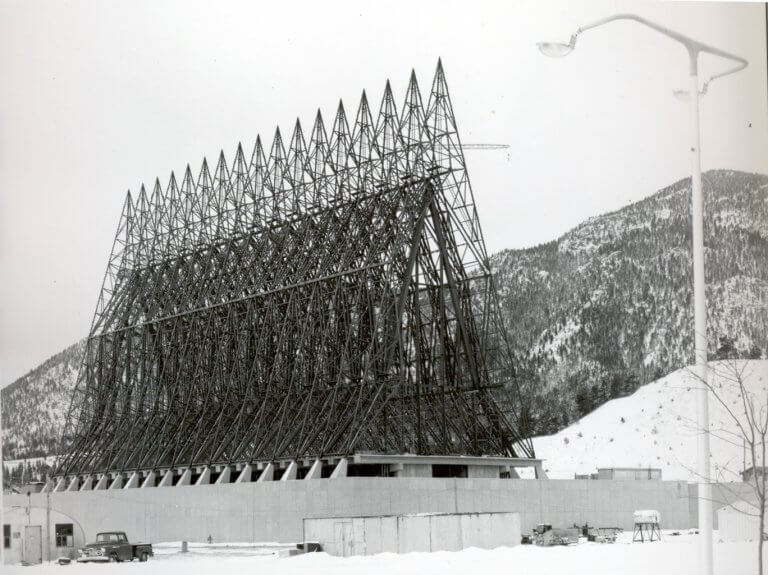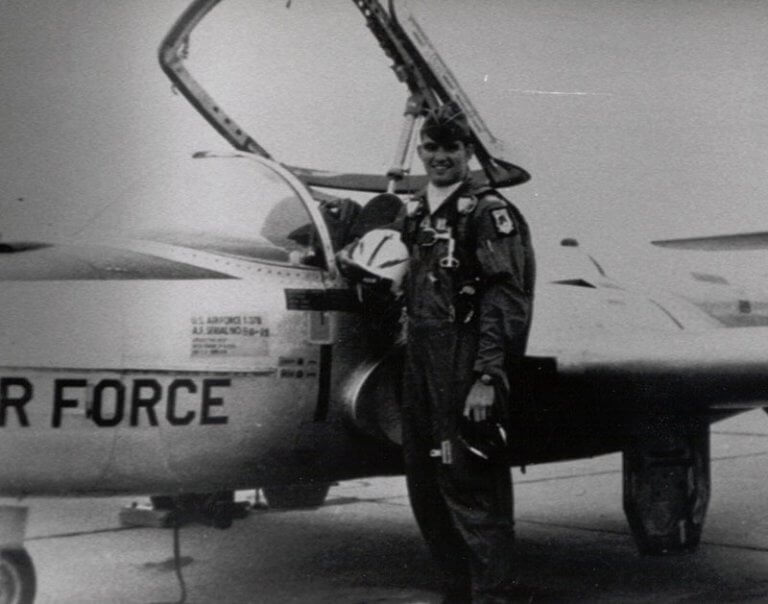THE BUILDING YEARS
On July 11, 1955, the same year construction began, the first class of 306 men swore in at a temporary site at Lowry Air Force Base in Denver, Colorado. Lt. Gen. Hubert R. Harmon, a key figure in the development of the United States Air Force Academy, was recalled from retirement to become the first superintendent.
The first class to enter the Academy chose the falcon as the mascot because it possessed characteristics which typify the United States Air Force—speed, graceful flight, courage, alertness and noble carriage. The first class also established the Honor Code, which is a vital segment of cadet life today.
The Academy was ready for occupancy by August 1958. After completing Basic Cadet Training at Lowry, the Class of 1962 was bussed to the north gate and marched five miles up the hill to the newly constructed cadet area. Less than a year later, the Academy received academic accreditation and the first class graduated and was commissioned on June 3, 1959.
As the Cold War continued through the 1950s and into the 1960s, the nation’s reliance on air power as the primary agent of deterrence highlighted the need for more Air Force officers. When the Air Force Academy was approved, cadet strength was set at 2,529, equal to that of West Point. The Naval Academy, however, had been authorized 4,417 midshipmen for many years. On March 3, 1964, President Lyndon Johnson signed Public Law 88-276, which authorized both the Air Force Academy and West Point to expand to the Naval Academy’s strength.
In 1961, the United States Air Force Academy Preparatory School was founded and is currently housed approximately six miles from the cadet area. The “Prep School” was established for applicants who do not receive a direct appointment to the Academy but possess promise as a future cadet. The school prepares cadet candidates academically, athletically and militarily and helps them develop the skills and character necessary to succeed at the Academy.
The Vietnam War was the first war in which Academy graduates fought and died. The first Academy graduate to die in combat was Capt. Valmore Bourque, Class of 1959. He was killed in action while flying as a C-123 aircraft commander on a combat mission northeast of Saigon. By coincidence, he was also the first cadet to take the Oath of Allegiance in the first entering class.
One hundred and forty-one graduates died in that conflict, and 32 graduates became prisoners of war. Capt. Lance P. Sijan, Class of 1965, fell into both categories. While on a bombing run November 9, 1967, he was severely injured when his F-4 exploded. He managed to evade capture for 45 days despite a fractured skull, mangled right hand and a compound fracture of his left leg. Once captured, he managed another brief escape. He continued to resist the enemy despite torture and worsening health. He died a prisoner of war on January 22, 1968 and became the first Academy graduate to be awarded the Medal of Honor in March 1976. Sijan Hall was named in his memory.

